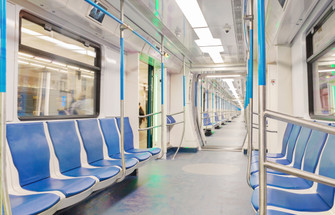Revolutionizing Mass Mobility
ABOUT MASS MOBILITY PLASTICS
Plastics are an important material used in mass mobility and transportation, as they can often provide weight and cost savings over traditional materials. Plastics are used in everything from mass transit vehicles to automotive and aerospace components. Acetal, styrene, and other thermoplastics are often used in structural components due to their strength and durability.
Epoxy and other composite materials are also used in many applications due to their superior strength-to-weight ratio. Plastics are often used in automotive and aerospace applications due to their low cost and superior performance compared to traditional materials such as steel and aluminum. Plastics are also able to withstand extreme temperatures and resist corrosion, making them ideal for use in mass transportation and mass mobility applications. With the increased focus on sustainability and emissions reduction, the use of plastics in mass transportation and mobility is likely to increase in the future.
Applications
- Marine — seating switch board panels, relay bases, bearings, bushings, porthole windows, cabinetry, seals, trays,
- Decking, surrounds, cutting boards, anchor shrouds,
- Fuel/ fluid handling tubing
- Mass transit (rail car and bus) —
- Bearings, pedestal liners,
- Coupler carrier
- Wear plates, brake bear guides, center bowl liners, luggage
- Folding trays,
- Bus windows, wall panels, mirrors, driver security glazing,
- Air conditioning housings,
- Lighting covers, electrical wear shoes
- Wear plates, brake bean guides,
- Center bowl liners
- RV — windshields, interior components, wear pads, lighting covers, body panels, hinge pins
- Trucks — dump truck liners, flooring, wear pads, step ups, light housings, covers, fan
- Shrouds,
- Snowplows,
- Mud flaps, fifth wheel bearing plates
Materials
- Acetal (POM)
- Acrylic (PMMA)
- Acrylonitrile-Butadiene
- Styrene (ABS)
- Epoxy
- High-Density Polyethylene (HDPE)
- Liquid Crystal Polymers (LCP)
- Nylon/Cast Nylon (PA)
- Phenolics (Industrial Thermosets)
- Polycarbonate (PC)
- Polyetheretherketone(PEEK)
- Polyetherimide (PEI)
- Polyethylene (PE)
- Polyethylene
- Terephthalate (PET)
- Ultra-High Molecular Weight Polyethylene (UHMW-PE
- Polytetrafluoroethylene(PTFE)
- Polyvinyl Chloride (PVC
Advantages May Include
- Lightweight
- Impact resistant
- Chemical and corrosion resistant
- Easy to fabricate
- Excellent weatherability
- Quieter than metal pipes (no “water hammer”)
- Easy to weld, install and operate
- Excellent flexibility and bending radius (which eliminates the need for custom fittings)
- Surge-resistant
- Provides superior protection for public health when used in water treatment applications
- Easy and safer to install
- Low maintenance
- Fabrication can be done on-site with simple hand tools; no torches or heavy equipment needed
- Energy savings with dynamic systems (a result of plastics, lighter weight and lower specific gravity)
- Weather resistant

